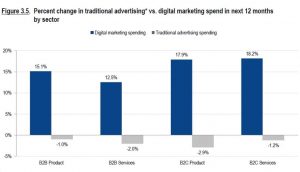
If you’ve been around the SEO world for some time, the name Matt Cutts is familiar. He is one of Google’s leading developers. His focus? Stopping webspam and punishing low-quality websites.
This is the guy businesses fear at night.
Remember that expression; “keep your friends close and your enemies closer?” Although I don’t view Matt Cutts as an enemy (I actually appreciate his endeavor to rid the world of terrible, spammy websites), I do believe that it’s important to heed his advice when it’s given.
One of the greatest mysteries in online marketing is knowing how Google works. By following advice that comes straight from the mouth of Matt Cutts, you can get a better grasp on how to write SEO content.
Here are the top five tips from Matt Cutts that we believe you should follow in your SEO content marketing strategy.
Tip #1: Don’t Neglect The Body Of Your Content.
My two cents: There’s a wealth of SEO advice that tells you to think about the headlines and title tags in your documents. Although important, it’s equally critical to supplement your headlines with meaningful body text.
Strengthen the claims you made in your headlines by backing them up in the paragraphs on your pages. Focus on elaborating a little bit more in the text on your web pages and posts. That will make it easier for Google to see why they should rank your website higher up on the search engines.
Tip #2: Know Your Audience.
My two cents: When trying to balance jargon vs. clear content, ask yourself this; “What terms is my audience using in the search box?” Those terms are telling of the depth of content your audience wants.
Most of the time, your audience will want information that’s clear and easy to understand. You want to write something that’s compelling to your end reader. Knowing the terminology they use to describe their problem or question will help you know what terminology to use when answering their needs.
Once in awhile, jargon is okay to use on a website. For example, if you’re speaking directly to people in a scientific industry who know and understand technical terms, it’s okay to use them once in awhile in your content.
For the most part, using general terms and clarifying a complex topic will make you look smarter and more reliable. Remember, as Matt Cutts says, the easier you can explain a topic, the better you appear to understand what you’re saying. The more you add in jargon and technical speak, the messier things get, which scares a lot of people away.
Tip #3: The Best Way To Compete Is With Better Content On Your Site.
My two cents: Offers that sound too good to be true, usually are. Follow your gut. If you get an offer for an SEO strategy that guarantees to skyrocket you to the top of search engine results, run! The se offers are obviously bogus and could do more harm than good.
se offers are obviously bogus and could do more harm than good.
To make your website competitive in search engine results, focus on offering high-quality content. If you’re helpful, people will land on your web page, share your content, and show Google you’re worth ranking high.
That takes time. It takes effort. But it works. More important, it’s cheaper and more sustainable over the long run to use a “white hat,” (Google’s preferred) approach to SEO.
Tip #4: Take A Goldilocks Approach To Your Home Page Content.
My two cents: It’s one of the most debated topics in content marketing; “how much content should be on my homepage?”
Having too much could take too long to download, slowing down your website and scaring your audience away. Having too little won’t tell your visitor or Google what you’re all about, which could get you punished in the long run.
Use the Goldilocks rule when it comes to home page content.
Matt Cutts tends to prefer a little bit more text on the home page. He suggests using text where it makes sense on your home page. If you have a lot of images, add short descriptions below the text to describe what the pictures are all about. Remember, Google can’t read images so you need to use your text to tell GoogleBot what you’re showing.
Another good way to do this is by including your blog posts on the home page. You’ll add keywords and content naturally, without slowing down the performance of your website.
Tip #5: Fight Back When Your Content Is Stolen.
My two cents: One of the most damaging things that can happen to your online reputation with Google is having other pages rip off your content. Suddenly, Google doesn’t know whether you copied Joe Schmo’s content or vice versa, so you’re both punished for duplicate content.
If you notice someone has copied your content, file a Digital Millennium Copyright Act (DMCA) notice with Google. This is where you send Google the details of the copied article and let them know it’s a copy of your original article. The other person will get the notice and they can either take it down or dispute the request.
Most of the time, Google has an accurate record of the original creator of the article. That’s good news because it means your site won’t get punished for another site’s poor SEO practices. Still, it’s good to be vigilant and report duplicate content whenever possible, just in case.
Takeaway
Matt Cutts has one of the strongest voices in the content marketing world. That’s because he knows what works and what doesn’t. Listen up and you’ll create a website that improves your inbound marketing efforts by leaps and bounds.
What happens next? What happens when you see the flood of traffic from a strong SEO content marketing plan? There’s a guide for that.
Download your free copy of, “How to Run an Inbound Marketing Campaign.” In it, you’ll learn what you must do to seamlessly guide your audience through the buying process.
(269)







